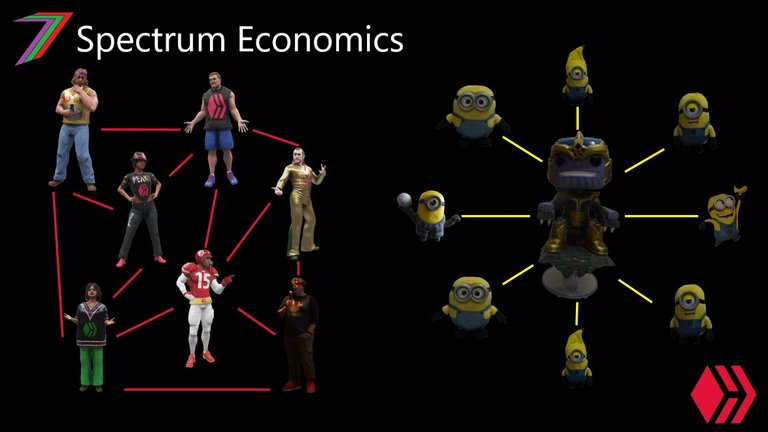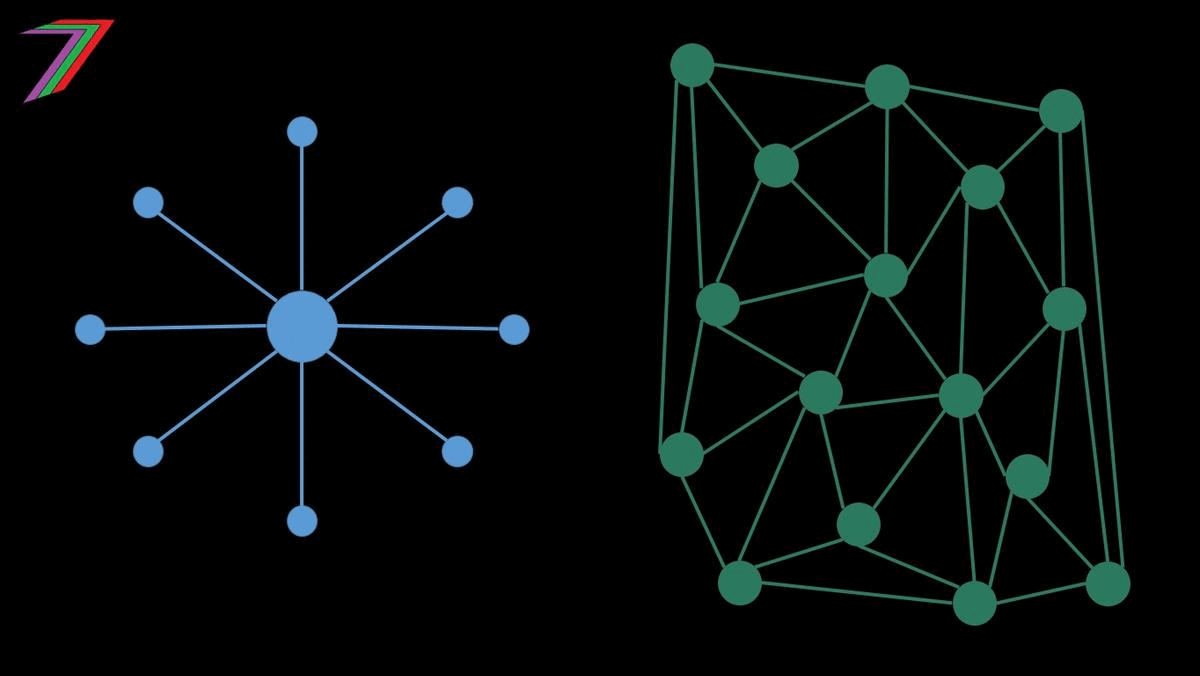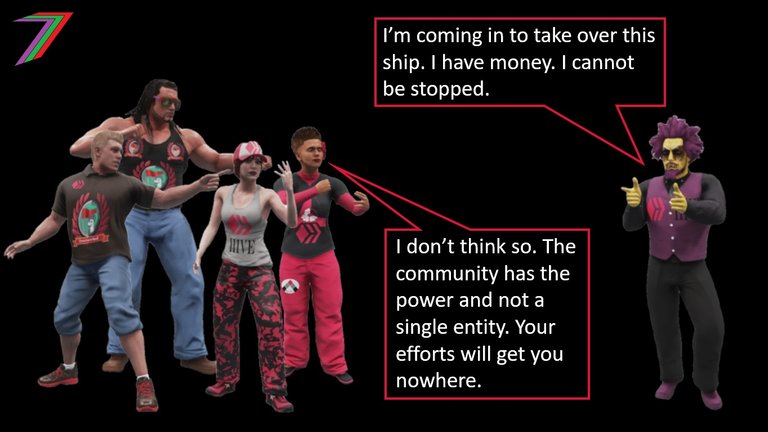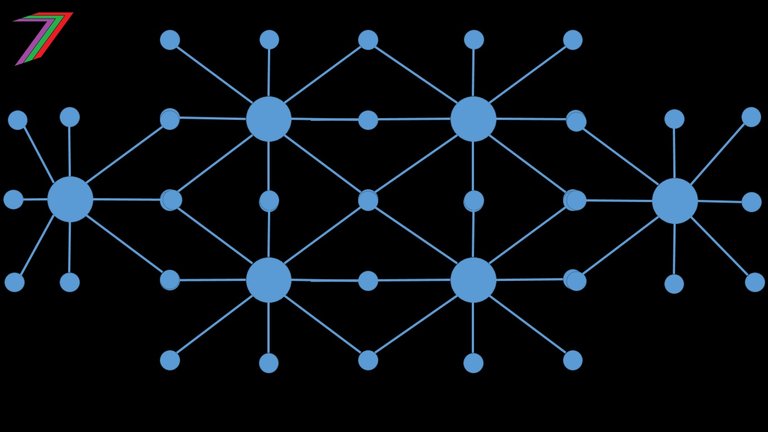Hi Everyone,

In this post, I discuss and compare centralised and decentralised decision-making processes. I discuss some of the key factors that determine the extent of centralisation. I consider some of the advantages and disadvantages of centralised and decentralised decision-making as well as the areas that these advantages and disadvantages have more weight. I consider how it is possible that some aspects of the same decision-making process could be highly centralised while other aspects could be highly decentralised. I consider how a mixed approach to the extent of centralisation could offset the weaknesses that both centralisation and decentralisation present to decision-making processes.
Many faces of Centralisation

There are many different approaches to decision-making. The extent of centralisation plays an enormous role in shaping these approaches. The extent of centralisation should be considered on a spectrum. Decentralisation increases as influence on decision-making spreads to more people and decisions are made closer to those most affected by them. Complete centralisation involves just one person making all decisions about everything for everyone. Complete decentralisation would involve everyone making decisions only for themselves. Neither absolute forms can be applied to society. Dictatorships could rank close to complete centralisation and Anarchies could rank close to complete decentralisation.
Below are a few examples of decision-making based on the number of decision-makers and the relationship the decision-makers have with the decision.
- By one person.
- By a small groups of people.
- By a large group of people.
- By everyone who is effected by a decision.
- By the people who are most effected by the outcome of the decision.
- By people who possess the most knowledge regarding the subject matter linked to the decision.
- Depends on circumstances.
The above examples provide us with some idea of the extent of centralisation involved with decision-making. For example, decisions made by one person for a group of people are more centralised than decisions were made by the whole group. However, the other examples do not clearly tell us how centralised the decision-making process might be. Several different factors affect the extent of centralisation of the decision-making process; these include:
- The number of people directly involved in the decision-making process.
- The level of consent given to those making the decisions.
- The extent of transparency of the decision-making process.
- The extent of accountability those making the decisions face.
- Diversity of backgrounds, capabilities, experience, etc. of the decision-makers.
- The number of people affected by the decisions made.
- The extent of influence of powerful third parties on decisions and decision-makers.
A decision-making process that directly involves just a large group of people could be more centralised than a decision-making process that directly involves a small group of people. For example, the decision-making process that directly involves more people could be very centralised if the decision-making process is not transparent, requires no accountability, requires no consent from those not directly involved, and affects a very broad and large group of people.
Decision-making at different levels

Decisions are made on different scales. Some decisions may affect just a few people, while others could affect everyone. We could categorise these scales as follows:
- Individual
- Family
- Community
- Wider Community
- State or County
- National
- International
- Global
As the scale of the impact of a decision increases decentralisation becomes more difficult to achieve.
If we assume the outcome of a decision only affects one person and the person affected has complete control over the decision-making process, the decision-making process can be considered decentralised by default. If more people are introduced and the decisions begins to affect more people, the decision-making could become more centralised if one person continues to make decisions by themselves with no input from the newly introduced people.
If we assume the outcome of a decision affects a family, if just one family member makes all decisions, decision-making would be relatively centralised. It could become less centralised if a few different family members make the decisions. It could become further decentralised if all the family’s decisions are made based on consensus from all family members. The decision-making process for the family would become more centralised if the decision-making process occurred outside the family.
If we assume the outcome of a decision affects everyone in the world, the decision-making process would be highly centralised. It would be impossible to involve all the people affected by the decision. It would be impossible to obtain verifiable consensus from all effected groups. Greater decentralisation could only be achieved, if the global decision could be reduced to many more local decisions. However, this is not always possible.
Effectiveness and Efficiency

We could look at the decision-making process in terms of efficiency and effectiveness. We could argue that decision-making processes should be both efficient and effective. The efficiency of a decision-making process depends on how well resources are applied to achieving an objective. For example, if a task can be completed in less time and with lower input costs, we could argue the task has been completed more efficiently. The effectiveness of a decision-making process depends on how successful it is at meeting targeted objectives.
The extent of centralisation plays a role in both the efficiency and effectiveness of decision-making.
Centralisation is likely to increase the efficiency of the decision-making process as it reduces or even eliminates the steps involved in making a decision. Decisions require less consultation, less feedback, less agreement, less documentation, and less research and analysis. However, lack of redundancy can cause failures to the decision-making process which puts the efficiency of centralised decision-making at risk (discussed later in post). Decentralisation is likely to decrease the efficiency of the decision-making process as the steps involved in making a decision pass through more people and more scrutiny.
Both centralised and decentralised decision-making processes can be effective at meeting targeted objectives. Centralised decision-making could be argued to be more effective in most situations as objectives are likely to be more clearly defined as there is less dispute over what they are or should be. Decentralised decision-making needs to deal with a wide variety of opinions and desired outcomes. Normally, decentralised decision-making results in more decisions being made. These decisions may not be able to be coordinated on a larger scale; therefore, targeted objectives may only be partially met. However, an advantage decentralised decision-making has over centralised decision-making is that decisions are made closer to the people most affected by them; therefore, the motivation for reaching effective outcomes is higher.
If we consider decision-making from the perspective of efficiency and effectiveness, we are likely come to the conclusion that centralised decision-making should be preferred over decentralised decision-making. The argument is particularly strong when efficiency is a strong priority.
Problems with efficiency and effectiveness criteria

Efficient decision-making does not necessarily result in effective decision-making. A decision that is reached quickly and at a low cost could poorly address the targeted objectives. The targeted objectives are determined through the decision-making process itself. These objectives may or may not align with the desired outcomes of all those affected by the decision. Successfully meeting the wrong objectives or the objectives of those most influential in the decision-making process does not equate to an overall desirable decision-making process. A decision-making process could be both efficient and effective but cause a negative net effect on society.
Decentralised decision-making enables a wide range of concerns to be considered because it pools more information from a wider variety of people. It enables multiple solutions that fit the needs of different groups of people. Centralised decision-making relies on a small number of people determining what is in the best interest of a much larger group of people. There is a high chance for the process to be inaccurate and a high chance that broad-brush solutions based on the assumed greater good will result in the needs of many not being met.
Points of failure and redundancy

Redundancies are a necessary part of any system. They reduce the impact of any failures within the system. An insufficient number of redundancies could result in the collapse of the system and/or processes.
We may see a lack of redundancy in centralised systems. This is because decisions depend on just a few people. This is because channels of communication converge to centralised points. This failure is magnified by the extent of dependence on centralised control. For example, if key decision-makers become uncontactable, decisions cannot be made until contact is regained. If contact is not regained, the decision-making process is put on hold until other decision-making arrangements can be made.
As decentralisation increases so does the level of redundancy. There are plenty of decision-makers for various types of decisions. The absence of some of them will not hinder the decision-making process as it is not dependent on any particular individuals. Communication moves freely between many points. If any communication is disrupted between any points it does not matter as it can still circulate through other points
Excessive redundancy could also be problematic as it can be costly and inefficient. Ideally, we would want the level of redundancy to be sufficient to ensure the probability of failure is very low but not to the point that it will never be used. Since the level of redundancy is closely correlated to extent of decentralisation, a system should not be either excessively centralised or decentralised.
Bad Actors

A centralised decision-making process is more vulnerable to attacks and/or takeovers by bad actors. If a person with bad intentions gains control of a significant portion of the decision-making process, they become difficult to stop or remove. Their actions cannot be easily bypassed because of the level of control they hold. The bad actor is also likely to enable the process to be infiltrated with other bad actors who support the actions of the original bad actor/s so as to gain more authority within the system. The removal of the bad actors may only be possible through the collapse of the whole system. Most Governments are highly vulnerable to takeovers by bad actors because of their centralised systems. We have witnessed this with the rise of many powerful dictators and authoritarian parties.
Decentralisation greatly reduces the threat from bad actors. This is because considerable power and authority does not sit with just a handful of people. If a bad actor attempts to take control over a decentralised system, they will be stopped before being able to cause significant damage. The decentralised community can respond to neutralise the bad actors efforts or even have them removed.
Possible hybrid of centralised and decentralised decision-making and governance

Centralised and decentralised decision-making approaches both have advantages and disadvantages. Therefore, we should not advocate for either extremes for all types of decisions. Instead, we may consider that some aspects of decision-making could be more centralised and other aspects could be more decentralised. A balance could be struck to achieve the advantages of both centralisation and decentralisation.
Centralisation has the advantage in terms of efficiency; this could be ideal for making routine and more mundane decisions. Decentralisation has the advantage in terms of assessing and determining what is most important to different groups of people; this could be ideal for collecting information and feedback. Decentralisation has the advantage in terms of better security from infiltration by bad actors; this could be ideal for protecting the overall decision-making framework.
Major and less routine decisions may need elements of both centralisation and decentralisation. Proposed solutions and responses could come from anyone and so could support and counterarguments for these solutions. However, people that have the relevant knowledge and experience will be required to determine the feasibility of proposed solutions as well as streamline and eliminate some of them. Design and implementation of solutions will also require people with the necessary skills to do so. This process should not be closed to a permanently predetermined group of experts but open to anyone with the necessary skills. The selection process of experts could still be relatively decentralised if the wider community has fluid input into it.
In my post Hive – How decentralised are we?, I discuss how the Hive blockchain has both decentralised and centralised aspects to it. I discuss how they complement each other as well as some of the challenges the blockchain has faced over the years and how many of them have been overcome. In my post Blockchain Government – Part 2: Leadership from the Blockchain, I discuss decentralised blockchain governance as a replacement to Governments in their existing forms. I discuss how the blockchain can maintain decentralisation of governance whilst maintaining a reasonable amount of efficiency. Technology such as the blockchain is increasing the viability of decentralised systems and decision-making processes; thus reducing the need for centralisation.
More posts

If you want to read any of my other posts, you can click on the links below. These links will lead you to posts containing my collection of works. These 'Collection of Works' posts have been updated to contain links to the Hive versions of my posts.
Hive: Future of Social Media

Spectrumecons on the Hive blockchain





I believe this is likely said because both occur in that aspect with the advantages and disadvantages they offer but decentralized decision is taking the positive impact then centralised in my own opinion.
Posted Using LeoFinance Beta
The case for more decentralisation is definitely stronger and getting stronger. Technology enables greater coordination of all decentralized processes. Blockchain is a great example of that. When Web 3.0 takes off we will see even more examples of the power of decentralisation. It's great to see Hive leading the way in this respect.
cool post!
@tipu curate
Upvoted 👌 (Mana: 0/39) Liquid rewards.